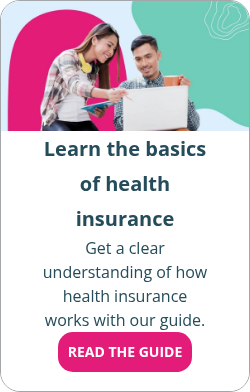What is a zero cost sharing plan?
By Elizabeth Walker on September 29, 2023 at 10:11 AM
American Indians and Alaska Natives face many healthcare inequalities from other Americans, such as high uninsured rates and increased barriers to finding proper care. They can also have limited access to group health insurance due to a lower employment rate and having jobs that don’t offer health benefits.
The government provides healthcare protections and services to American Indians and Alaska Natives, like the Indian Health Service (IHS), to ease some of these issues. The Affordable Care Act (ACA) also offers solutions to increase health coverage for these individuals, one of which is access to zero cost sharing plans.
Cost sharing is when patients pay a part of their healthcare expenses not covered by their health insurance. Some people qualify for cost sharing reductions based on their income level. But for American Indians and Alaska Natives eligible for zero cost sharing plans, there’s a greater opportunity for financial relief.
Below, we’ll go over what zero cost sharing plans are and what other health benefit options exist for those who don’t qualify.
What is a zero cost sharing plan?
Zero cost sharing plans are health insurance policies for members of federally recognized tribes and Alaskan Native Claims Settlement Act Corporation shareholders with household incomes between 100% to 300% of the federal poverty level (FPL). Qualified individuals can purchase these plans through the federal Health Insurance Marketplace.
Individuals can determine eligibility for these plans on the Marketplace. In addition to verifying their income level, participant eligibility requires applicants to qualify for premium tax credits.
Features of zero cost sharing plans include the following:
- Medical services individuals receive from an Indian healthcare provider, which is an in-network provider for these types of plans, aren’t subject to out-of-pocket costs, like copays, deductibles, or coinsurance
- Services covered by Marketplace health insurance plans are also exempt from out-of-pocket costs
- The plan doesn’t require patients to get a referral from an Indian healthcare provider when requesting coverage for the ten essential health benefits through a Marketplace plan
- Plans at any metal level (such as a bronze, silver, gold, or platinum plan) are eligible for zero cost sharing on the Marketplace
Participants in zero cost sharing plans aren’t exempt from paying their monthly premium. Premium amounts will vary based on the plan’s metal level. Bronze plans offer the lowest premiums, silver plans offer mid-range monthly payments, and gold and platinum plans have the highest.
But, premium tax credits can help individuals lower their premiums to make the plan even more affordable.
What do zero cost sharing plans cover?
Zero cost sharing plans cover all essential health benefits needed to maintain good health and well-being. This means that basic checkups, preventive services, doctor visits, prescription drugs, and most necessary forms of surgery are eligible for coverage under a zero cost sharing plan. Patients don’t pay for covered benefits performed by an in-network provider.
These plans don't cover medical services and surgeries that insurers consider elective, such as cosmetic surgery. To receive coverage, there must be a justifiable reason for the treatment.
Zero cost sharing plans don’t cover any procedures or treatments that don’t show a reasonable need. So, if the patient wants a particular service that isn’t considered reasonable, it will be an out-of-pocket cost.
When can employees enroll in a zero cost sharing plan?
If you have employees who meet the eligibility criteria for a zero cost sharing plan, they can submit their application on the federal marketplace website1. Unlike other employees looking to enroll in a health insurance plan, American Indians and Alaska Natives can enroll in Marketplace coverage any time during the year rather than waiting for the annual open enrollment period.
Participants can change their health plan as often as once per month2. This special protection means that flexible insurance coverage for these groups is available frequently and can start immediately in the event of a health crisis.
How to support employees with or without a zero cost sharing plan
Zero cost sharing plans are great solutions for American Indian and Alaska Native employees struggling to find affordable health coverage options. But how can you help them and the rest of your workforce with their healthcare costs?
If you want to offer health benefits that help your employees who are eligible for individual zero cost sharing plans and those who aren’t, you’re in luck. There are two affordable health benefit options that can meet any employee's needs.
A health reimbursement arrangement (HRA) is a tax-advantaged, employer-funded health benefit that allows employees to receive reimbursements for health insurance premiums and other qualified medical expenses.
Similarly, health stipends are a flexible way to boost your employees’ income with taxable allowances to pay for their health insurance premiums and other necessary medical care.
Let’s take a closer look at these health benefits to learn more about how they can work for your employees regardless of whether or not they qualify for a zero cost sharing plan.
Qualified small employer HRA (QSEHRA)
As the name implies, this first HRA is perfect for small employers. A QSEHRA is for employers that don’t offer group health insurance and have fewer than 50 full-time equivalent employees (FTEs). Like all HRAs, only employers can contribute funds and set the monthly allowance amount. However, the IRS sets annual maximum contribution limits.
With a QSEHRA, you can reimburse healthcare expenses outlined in IRS Publication 502, including individual health insurance premiums like zero cost sharing plan premiums. Employers can limit the list of eligible expenses if they choose. Once an employee incurs an eligible expense, the employer reimburses them up to their allowance amount.
Employers offering a QSEHRA must offer it on the same terms to each of their full-time W-2 employees. Part-time or seasonal employees can be eligible, too, as long as they receive the same allowance amount as full-time employees.
Lastly, reimbursements are income tax-free for employees as long as they have a policy that meets minimum essential coverage (MEC). For employers, all contributions are tax-deductible and free of payroll taxes.
Individual coverage HRA (ICHRA)
If you want more flexibility from your health benefit, an ICHRA is an excellent choice. ICHRAs are for employers of any size and work similarly to a QSEHRA. By offering an ICHRA, you can reimburse your employees tax-free for health insurance bought on the individual market—including zero cost sharing plans. ICHRAs are a great option for employers who want to avoid the headaches that come with traditional group health plans.
With an ICHRA, you can set a monthly allowance amount for your employees to buy individual health insurance plans and other healthcare items. There are no minimum or maximum allowance requirements, and you can set different allowances for employee classes.
For example, suppose you have many part-time American Indians and Alaska Natives. In that case, you can offer all your part-time employees more of an allowance than your full-time workers. Just remember you must provide the same reimbursement amount to all employees in the same class.
ICHRAs and premium tax credits can also work together, but it can be tricky. Employees can’t accept any premium tax credit they may be eligible for if they enroll in the ICHRA. They can only claim the credit if their ICHRA allowance is unaffordable. If the allowance is unaffordable, they can choose between claiming their tax credit or enrolling in the ICHRA benefit.
Integrated HRA
For employers of any size with a group health plan already in place, an integrated HRA, also known as a group coverage HRA (GCHRA), is designed to work alongside employer-sponsored coverage. But, employees must enroll in the group health plan to participate in the HRA plan.
An integrated HRA allows employees to pay for eligible medical care expenses not fully covered by their group plan, such as annual deductibles, coinsurance percentages, and copays. The only non-eligible cost is the group health plan premium.
By supplementing your group health plan with an integrated HRA, you can offer a variety of affordable health plan types. For example, you can offer a bronze plan, typically high-deductible health plans (HDHPs), which have cheaper premiums.
These plans may be more budget-friendly for your American Indian and Alaska Native employees without a zero cost sharing plan.
Like ICHRAs, employers also tailor their allowance amounts to fit seven different employee classes with an integrated HRA. This more customized option allows you to give your employees the best allowance amount to pay for the medical care they need.
Health stipend
Although they’re a less formal benefit, employee stipends can help organizations cover health costs for employees. A health stipend is a fixed amount of money an employer provides to help their employees purchase health insurance and other medical expenses. Typically, employers add stipend money into an employee’s wages as taxable income.
Since stipends are less regulated, the employees can spend the money however they want. Employers can’t request evidence of coverage from employees to prove they’ve enrolled in an individual plan. They also can’t ask for receipts to prove that the allowance was spent on items listed in IRS Publication 502.
Stipends make excellent options for organizations with many American Indian and Alaska Native employees—or any employees who may qualify for premium tax credits, as stipends would not impact their tax credit eligibility.
But, stipends don’t satisfy the ACA’s employer mandate for organizations with 50 or more FTEs. For these organizations, an ICHRA is a better fit.
Conclusion
American Indians and Alaska Natives can have more difficulties getting good health insurance. The ACA has helped by increasing access to affordable health coverage with zero cost sharing arrangements.
If you’re an employer with employees who are not eligible for zero cost sharing plans, or just want to support your American Indian and Alaska Native employees even more, consider implementing an HRA to ensure everyone has access to a formal and flexible health benefit.
This article was originally published on June 8, 2022. It was last updated on September 29, 2023.
Check out more resources
See these related articles

The differences between partnering with a PEO or a broker
Learn the key differences between partnering with a PEO or a broker. Discover which option best suits your business's HR, benefits, and compliance needs.

Can I pair employer benefits with premium tax credits?
Discover if you can combine employer benefits with premium tax credits when it comes to health insurance. Get all the answers in this informative post.

What is a health insurance subsidy?
Discover the ins and outs of health insurance subsidies with this comprehensive overview. Learn how they can help make healthcare more affordable for you.



